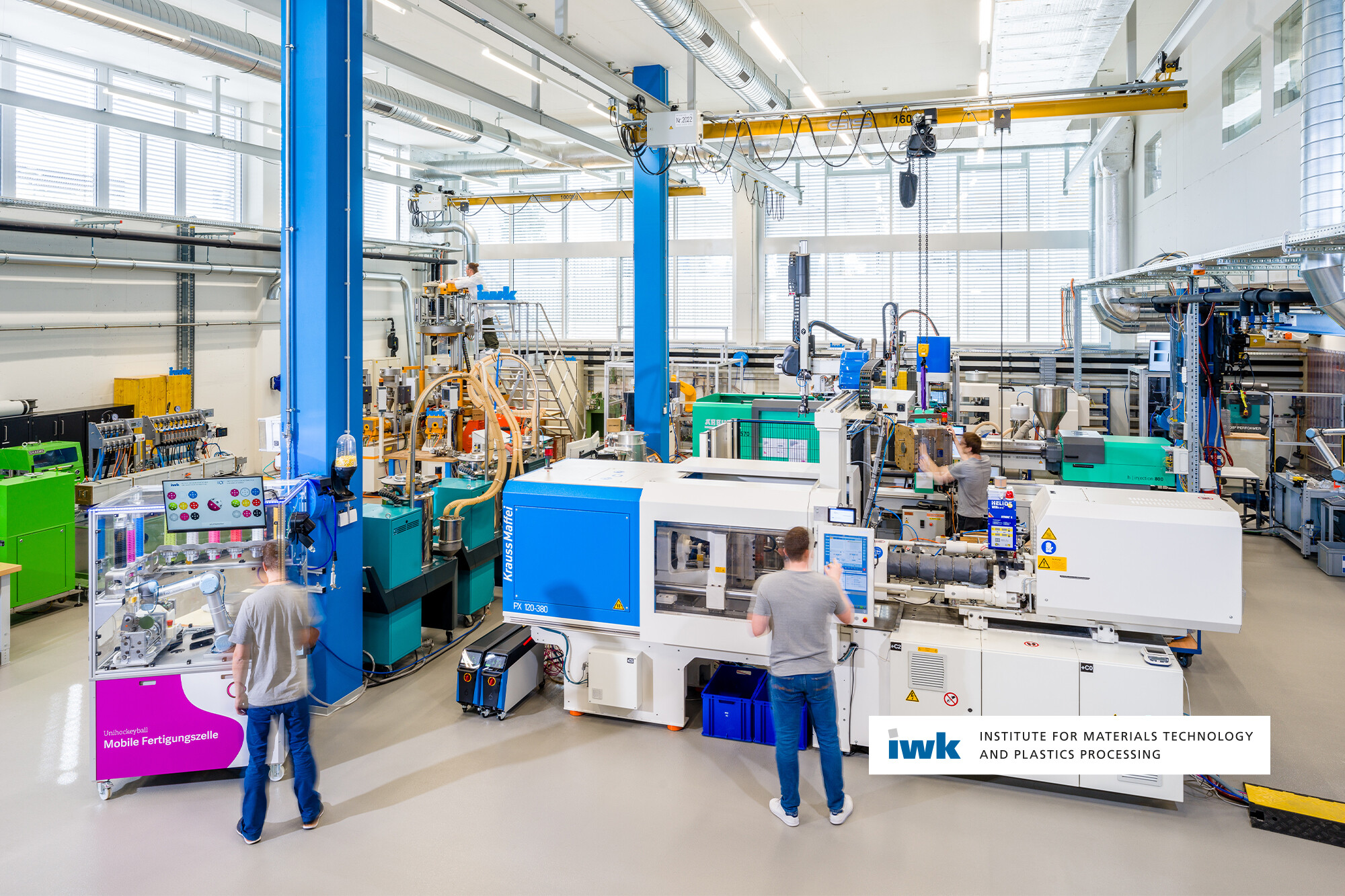3D printing / Additive Manufacturing
The research field 3D printing / Additive Manufacturing (AM) develops solutions for industry and academia along the entire 3D printing process chain; from the development and optimization of various AM processes, to the design and optimization of components, to the qualification and parameter development of newly developed materials.
In many projects from the other departments, there are also useful opportunities where the know-how of additive manufacturing can be included. Be it, for example, only to produce a prototype. This includes for instance prototyping or rapid tooling using additive manufacturing.
Core Competencies
- AM process development and optimization (SLS, APF, FFF, FRP, Hybrid LMD, ADAM, FEM)
- AM materials development (parameter determination)
- Design for AM (AM-compatible design)
- Automated design (workflows, configurators)
- Simulations for AM (surface and topology optimization, simulation)
- Reverse engineering (via 3D scan or CT scan)
- Technical consulting
- Fesibility studies (from first idea to manufacturing of single parts, small series production)
- Digitalization (smart factory, simulation)
- Training (Bachelor and Master studies, CAS courses, OSTLAB)
Equipment
Additive Manufacturing machines
EOS FORMIGA P 110 Velocis – Selective Laser Sintering (SLS)
- Laser type: CO2, 30W
- Typical layer thicknesses: 0.06 - 0.10 - 0.12 mm
- Print volume: 200 × 250 × 330 mm
- Build rate: up to 1.2 l/h
Download Flyer SLS EOS Formiga P 110
Download Flyer Automatisiertes Strahlen von Bauteilen (SLS)
ARBURG freeformer 200-3X - ARBURG plastic freeformer (AKF)
- 2 extruder (2 materials in granulate form)
- Nozzle diameter: 0.15 - 0.2 - 0.25 mm
- Typical layer thicknesses: 0.2 to 0.35 mm
- Print volume: 189 × 134 × 230 mm
- Nozzle temperature: up to 350°C
- Build chamber temperature: up to 120°C
Original Prusa SL1S SPEED – Masked Stereolithography (MSLA)
- Monochrome LCD: 5.96'', 2560×1620p, 405 nm
- Layer thickness: 0.025 - 0.1 mm
- Print volume: 127 × 80 × 150 mm
- Layer exposure time: 1.3 – 2.4 s (depending on material and layer height)
EVO-tech EVO-lizer EL-102 – Fused Filament Fabrication (FFF)
- 2 extruders (for up to 2 materials)
- Nozzle diameter: 0.3 - 0.7 mm
- Typical layer thickness: 0.1 - 0.5 mm
- Print volume: 500 x 400 x 510 mm
- Nozzle temperature: up to 420°C (suitable for high performance plastics)
- Print bed temperature: up to 200°C
- Build chamber temperature: up to 100°C
- Integrated filament drying
Ultimaker S5 – Fused Filament Fabrication (FFF)
- 2 extruders with filament sensors (2 materials)
- Printcore system for quick exchange of printheads
- Nozzle diameter: 0.25, 0.4, 0.8 mm
- Typical layer thicknesses: 0.02 - 0.6 mm
- Print volume: 330 x 240 x 300 mm
- Nozzle temperature: up to 280°C
- Print bed temperature: up to 140°C
Markforged Mark Two – Fiber Reinforced Printing (FRP)
- Printhead with filament and fiber feed
- Nozzle diameter: 0.4 mm (filament) and 0.9 mm (fiber)
- Typical layer thickness: 0.1 - 0.2 mm
- Print volume: 320 x 132 x 154 mm
Various other filament-based 3D printers
Download Flyer Reverse Engineering und Qualitätssicherung
Download Flyer Chocoformer
Post-processing
- Ultrasonic cleaning bath for support removal
- ARTEKA blasting cabin with rotary drum for automated blasting
- Equipment for dyeing and surface treatment of SLS components
Software
- Siemens NX (CAD)
- Materialise Magics (Pre-Processing)
- Various slicing tools (Simplify3D, Cura, PrusaSlicer, ...)
- Digimat-AM from MSC Software (Simulation)
Videos
Technical papers
Journals
2024
Download Selektives Lasersintern
Grimm, S., Omidvarkarjan, D., KunststoffXtra 09-10/2024, p. 6-7
Download 5-Achsen-3D-Druck
Omidvarkarjan, D., KunststoffXtra 07-08/2024, p. 6-7
2023
Download Automatisierte Konstruktionstools
Grünenfelder, P., Omidvarkarjan, D., Grimm, S., KunststoffXtra 11-12/2023, p. 16-17
2021
Download Online-Temperaturmessung beim SLS
Büse, U., Grimm, S., KunststoffXtra 12/2021, p. 4-5

